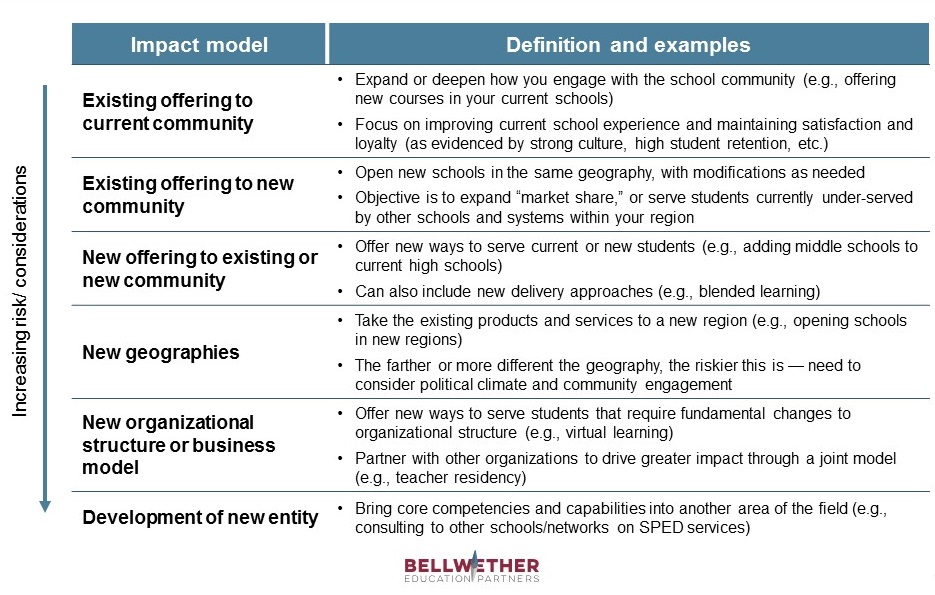This is the second blog post in our #SGInstitute series, led by our Strategic Advising practice on lessons learned from advising schools, networks, and districts on growth and expansion. Next up in the series: how do leaders know they are ready to take the next step?
We recently launched our tenth Strategic Growth Institute cohort here at Bellwether. Our cohort work brings us together with charter and district leaders who are actively thinking about expanding their impact by adding new seats or campuses. When asked “why grow your school or model?”, our school partners commonly remark that they’re already serving students and communities well (and often far better than other options), and that their model is in high demand. Occasionally, school leaders want to move quickly to take advantage of unique landscape conditions that might not last forever (a charter- or innovation-friendly administration, for example).
But a second question — “what does expansion look like?” — yields a broader range of answers. Getting clear on what constitutes success is critically important because it shapes how a school leader and stakeholders will prioritize strategic decisions for years to come. A school seeking to replicate its model and grow from one campus to three will be on a very different path from a school that seeks to be a “teaching hospital” and codify its practices to share with other operators. Many choices, including culture development, organizational structure, talent philosophy, and community engagement, are fundamentally impacted by the direction the school (often in partnership with a district or network) wants to head.
We offer school leaders three broad questions as they think about which vision or impact model is right for them:
- What are your core competencies? What makes you special? Getting clear on their value proposition — be it unique features of their instructional model, innovative professional development practices, or authentic engagement of the community — helps leaders define the non-negotiables that should guide any expansion.
- What are the needs or gaps in the community or in the field more broadly? In what ways are students’ or families’ needs not met? Understanding what opportunities exist in the landscape, be it down the street from an existing campus or in a new region, will help school leaders determine whether their model can thrive and/or what modifications might be necessary. Talking to stakeholders is critical.
- What are other players in the landscape currently doing? A leader may have a compelling vision and reason to add new campuses, but may be stymied by local policies that preclude expansion, an over-saturation of high-quality seats in a particular neighborhood, or an over-saturation of a particular model (like STEAM or single-gender programming). In these cases, she may want to modify her definition of expansion and think about alternatives.
The good news: there are many ways to expand impact beyond adding seats. Below, we present several impact models with varying degrees of risk:

We are energized by the many ways our partner schools and networks have approached growth and deepened impact with new and existing students.
If you’re interested in learning more about the Strategic Growth Institute and whether it’s a good fit for your organization, contact my colleague Rebecca Gifford Goldberg.
